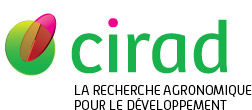Mze Hassani I., Raveloson-Ravaomanarivo Lala Harivelo, Delatte Hélène, Chiroleu Frédéric, Allibert Agathe, Nouhou Salima, Quilici Serge, Duyck Pierre François. 2016. Invasion by Bactrocera dorsalis and niche partitioning among tephritid species in Comoros. Bulletin of Entomological Research, 106 (6) : 749-758.
|
Version Online first
- Anglais
Accès réservé aux personnels Cirad Sous licence  . .
42_Mze_Hassani_et_al_2016_BER.pdf Télécharger (509kB) | Demander une copie |
|
|
Version publiée
- Anglais
Accès réservé aux personnels Cirad Utilisation soumise à autorisation de l'auteur ou du Cirad. invasion-by-bactrocera-dorsalis-and-niche-partitioning-among-tephritid-species-in-comoros.pdf Télécharger (547kB) | Demander une copie |
Quartile : Q1, Sujet : ENTOMOLOGY
Liste HCERES des revues (en SHS) : oui
Thème(s) HCERES des revues (en SHS) : Psychologie-éthologie-ergonomie
Résumé : Ten economically important species belonging to the Tephritidae have been recorded in Union of the Comoros (an island nation off the coast of East Africa). Little is known about the distribution of these species and how they are affected by climatic factors in the Comoros archipelago. The main objectives of this study were to characterize: (i) the population dynamics of tephritid fruit flies in relation to season and host fruit availability and (ii) the geographic distribution of tephritids in relation to temperature and rainfall. The study was conducted during 2 years at 11 sites on three islands (Grande Comore, Anjouan, and Mohéli) in the archipelago. The site elevations ranged from 55 to 885 m a.s.l. At each site, flies were collected weekly in eight traps (four different lures, each replicated twice). Fruit phenology was also recorded weekly. The dominant tephritid species detected was the invasive Bactrocera dorsalis Hendel followed by Ceratitis capitata Wiedemann. Tephritid species were generally more abundant during the hot and rainy seasons than during the cold and dry seasons. Bactrocera dorsalis numbers were higher on Grande Comore than on the two other islands. On Anjouan and Mohéli, B. dorsalis numbers were very low in 2014 but sharply increased in 2015, suggesting a recent invasion of these islands. Abundances were significantly related to the fruiting of mango, strawberry guava, and guava for B. dorsalis and to the fruiting of mango, guava, and mandarin for C. capitata. Bactrocera dorsalis was more abundant in hot and humid low-altitude areas, while C. capitata was more abundant in dry medium-altitude areas, suggesting the occurrence of climatic niche partitioning between the two species.
Mots-clés Agrovoc : Bactrocera dorsalis, Tephritidae, dynamique des populations, écosystème, plante hôte, facteur du milieu, facteur climatique, distribution des populations, distribution géographique, température, conditions météorologiques, variation saisonnière, Citrus sinensis, Citrus reticulata, Psidium, Psidium guajava, Mangifera indica, Ceratitis capitata, compétition biologique, interactions biologiques
Mots-clés géographiques Agrovoc : Comores
Mots-clés complémentaires : Psidium cattleianum, Ceratitis malagassa
Mots-clés libres : Population dynamic, Niche partitioning, Tephritid host fruits, Abiotic and biotic factors, Insular environment
Classification Agris : H10 - Ravageurs des plantes
Champ stratégique Cirad : Axe 4 (2014-2018) - Santé des animaux et des plantes
Auteurs et affiliations
- Mze Hassani I., Université d'Antananarivo (MDG)
- Raveloson-Ravaomanarivo Lala Harivelo, Université d'Antananarivo (MDG)
- Delatte Hélène, CIRAD-BIOS-UMR PVBMT (REU)
-
Chiroleu Frédéric, CIRAD-BIOS-UMR PVBMT (REU)
 ORCID: 0000-0002-4874-5357
ORCID: 0000-0002-4874-5357
- Allibert Agathe, CIRAD-BIOS-UMR PVBMT (REU)
- Nouhou Salima, INRAPE (COM)
- Quilici Serge, CIRAD-BIOS-UMR PVBMT (REU)
-
Duyck Pierre François, CIRAD-BIOS-UMR PVBMT (REU)
 ORCID: 0000-0001-5484-1970
ORCID: 0000-0001-5484-1970
Source : Cirad-Agritrop (https://agritrop.cirad.fr/581510/)
[ Page générée et mise en cache le 2024-04-06 ]




